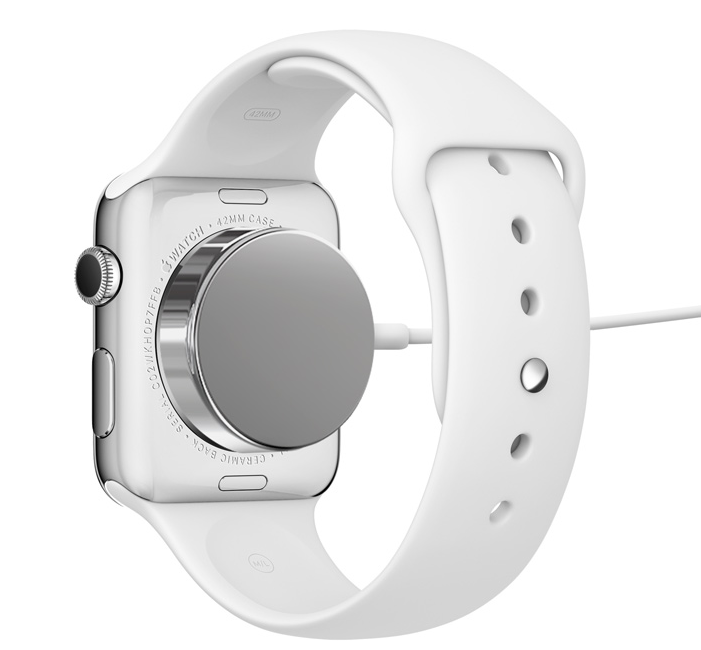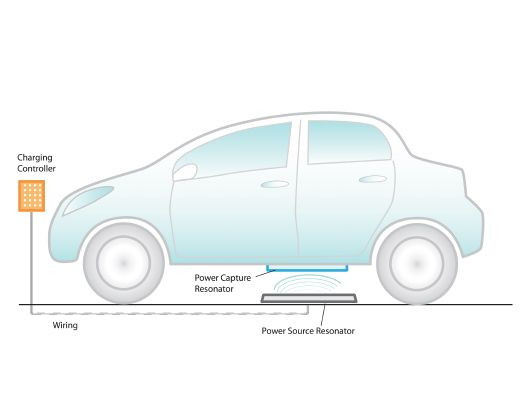Apple Watch's Wireless Charging Is Good Design, Not A Watershed Moment

Critics agree that Apple's unveiling Tuesday of its long-anticipated smartwatch, simply called the Apple Watch, marked a major “moment” for wireless charging. They just don’t agree on whether it’s a "defining" one, or a disappointment.
Yes, Apple Inc. (NASDAQ:AAPL) is using wireless charging in the Apple Watch. But it's not making a big deal about it. The Cupertino, California, company is giving the impression that wireless charging is no "magical" feature, it's just a convenient part of the wearable's design.
Apple’s adoption of magnetic induction in the Watch, due in "early 2015" at a starting price of $349, could clear up years of “consumer confusion” caused by “competing standards,” as three different industry groups duke it out in a wireless charging war, Reuters said. That is, despite Apple's avoiding wireless charging for years, and left it out of the iPhone 6. Critics like Jessica Lipsky, an associate editor at EE Times, which covers the electronics industry, said that Apple has downplayed wireless charging until it was a mere afterthought in the company's first smartwatch.
Lipsky asks why Apple chose induction charging (which requires close contact) over the superior magnetic resonance technology, which allows devices to charge more quickly over long distances. With induction, Apple calling the Watch’s charger “wireless" is a bit of a "red herring," and the reason it’s not used in either iPhone 6 model is likely because it would greatly increase charging time, she said.
Another mystery surrounding the Apple Watch's battery is how it lasts on a charge. Apple hasn't made any mention of the device's battery life, outside of a throwaway comment telling reporters that the Watch would charge "nightly." And Apple engineers are still working furiously to improve battery life before the Watch launches in 2015, Re/ code reported Wednesday.
Forbes contributor Elise Ackerman said that Apple’s use of wireless charging, like its battery life, is too little, too late. “[I]n the case of the Apple Watch, the transmitter, which is snugged into place with a magnet, is connected to a cord … it’s a lot like plugging in your Macbook Air or Macbook Pro,” she said.
That's not very impressive, and anyone “expecting another watershed moment” for wireless charging, Ackerman writes, was "disappointed.” But existing wireless charging methods are imperfect: they generate significant amounts of heat and require careful placement. If the phone (or watch) isn't placed on a wireless charging pad’s “sweet spot,” it can charge more slowly, or not at all. Therefore, Apple's inclusion of a magnet may be seen as a simple (and familiar) way of overcoming those limitations.

Apple may be intentionally moving slowly into wireless charging, so it can quickly change course, if necessary. New methods continue to pop up with increasing frequency: there's now one that uses radio waves to charge anywhere in a particular room, and another method that uses ultrasound.
EE Times' Lipsky said a long-existing “need for a major player to drive the ubiquity of wireless charging in the mobile sphere” has not yet arrived. Apple should have chosen magnetic resonance charging, which can requires less of a sweet spot, and can charge devices over greater distances (think the distance between the bottom of a car and a floor-mounted power source), but instead, it “chose the less mobile close-coupled magnetic inductive charger for its watch. Why Apple, why?” she asks, before mentioning that if Apple hasn't trademarked the tech, its method will likely become the standard industry-wide.
Apple continues to avoid incorporating wireless charging into its iPhone line, and the particular method used in the Watch inevitably would disappoint some. However, Apple’s wireless tech may not catch on with other manufacturers, instead remaining a proprietary connection like Thunderbolt.
And wireless charging’s “moment” may still lie ahead.
© Copyright IBTimes 2024. All rights reserved.





















